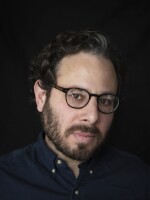MELISSA BLOCK, HOST:
This is ALL THINGS CONSIDERED from NPR News. I'm Melissa Block.
AUDIE CORNISH, HOST:
And I'm Audie Cornish. The National September 11th Memorial Museum officially opened its doors today in New York, after more than a decade in development. In a few minutes, we're going to hear about the difficult decisions that had to be made along the way in a conversation with the museum's director. NPR's Joel Rose begins our coverage with today's emotional dedication ceremony.
JOEL ROSE, BYLINE: A few hundred people - mostly family members and survivors - filled the cavernous hall. Most of the museum is 70 feet below street level on the bedrock that was the foundation of the World Trade Center towers. President Obama called it a sacred place of healing and hope.
PRESIDENT BARACK OBAMA: To reaffirm the true spirit of 9/11 - love, compassion, sacrifice and to enshrine it forever in the heart of our nation.
ROSE: It's a big space that houses some massive artifacts: a mangled fire truck, fragments of steel from the Twin Towers. But the dedication ceremony focused on personal items and stories. The president introduced Allison Crowther(ph), whose son, Wells, died while helping rescue others from the South Tower. He was later identified by the red handkerchief he wore over his mouth in the smoky building.
ALLISON CROWTHER: It is out greatest hope that when people come here and see Wells' red bandana, they will remember how people helped each other that day. And we hope that they will be inspired to do the same.
ROSE: Florence Jones talked about a pair of shoes she donated to the museum, the same pair she took off as she raced down 77 flights of stairs in her stocking feet.
FLORENCE JONES: I had put them in a plastic container and when I took them out, they still had the smell on them from that awful day. I wanted my nieces and my nephew and every person that asked what happened to see them and maybe understand a little bit better what it felt like to be us on that day.
MICKEY CROSS: We were trapped way down inside a dark hole. And after a while, we saw this small beam of light about 30 feet above us.
ROSE: Firefighter Mickey Cross was in the North Tower when it collapsed. Somehow, Cross survived, along with other members of the fire department and the Port Authority Police.
CROSS: After our rescue, many of us joined the rescue and recovery teams at Ground Zero to do for others what had been done for us. We had to. We had come together at Ground Zero to help each other out. This is something we should never forget and never stop doing.
ROSE: School principal Aida Rosario-Dolch(ph) lost her sister, Wendy Wakeford, on September 11th.
AIDA ROSARIO-DOLCH: After Wendy died, I was with friends and said imagine if we went to Afghanistan and we built a school there. What a kick in the head to Osama bin Laden.
ROSE: A few years later, a school in Wendy's honor opened in Afghanistan. Former New York City Mayor Rudy Giuliani says stories like these of resilience in the face of tragedy are the museum's real subject.
RUDY GIULIANI: What this museum does is allow us to see that we absolutely can affect each other's lives by what we do at a time of crisis, how we are strengthened by what was done that day.
ROSE: Survivors and family members can visit the September 11th Museum around the clock until next week when it opens to the general public as well. Joel Rose, NPR News, New York. Transcript provided by NPR, Copyright NPR.


